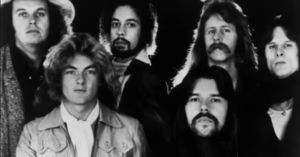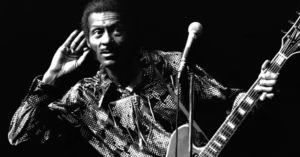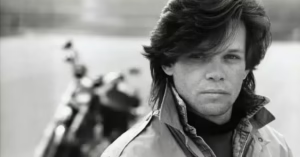The Byrds: Folk Rock Pioneers and Architects of Psychedelia and Country Rock
The Byrds. I. Formation and Early Days (1964–1965)
The Byrds formed in Los Angeles in 1964, uniting folk roots with a rock sound influenced by The Beatles. Founding members included:
- Roger McGuinn – 12-string Rickenbacker guitar, vocals
- Gene Clark – Rhythm guitar, vocals, main songwriter
- David Crosby – Rhythm guitar, vocals
- Chris Hillman – Bass, vocals
- Michael Clarke – Drums
They were dubbed “America’s answer to The Beatles” for their harmonies and look, but they soon carved out their own identity, merging Bob Dylan’s lyricism with electric rock instrumentation — effectively inventing folk rock.
The Byrds. II. Breakthrough and Folk Rock Invention
✦ Mr. Tambourine Man (1965)
Their debut single, a cover of Bob Dylan’s “Mr. Tambourine Man,” reached #1 on both the U.S. and UK charts, marking a major shift in popular music.
Key tracks:
- “Mr. Tambourine Man” – Folk lyrics with jangly electric guitar
- “I’ll Feel a Whole Lot Better”
- “Chimes of Freedom”
This album is often credited with launching the folk rock movement.
✦ Turn! Turn! Turn! (1965)
Built on similar themes, it included:
- “Turn! Turn! Turn!” – Adapted from the Book of Ecclesiastes
- “Set You Free This Time” – A Gene Clark gem
The Byrds. III. Psychedelic and Experimental Era (1966–1967)
✦ Fifth Dimension (1966)
As Gene Clark departed, the band moved into psychedelia and free-form experimentation.
Notable tracks:
- “Eight Miles High” – A landmark of psychedelic rock, inspired by Ravi Shankar and John Coltrane
- “5D (Fifth Dimension)”
- “I See You”
The album had abstract lyrics and jazz influences, paving the way for more adventurous rock.
✦ Younger Than Yesterday (1967)
Chris Hillman emerged as a songwriter.
Features:
- “So You Want to Be a Rock ‘n’ Roll Star” – A satirical jab at manufactured fame
- “My Back Pages” – Another Dylan cover
- “Have You Seen Her Face”
✦ The Notorious Byrd Brothers (1968)
A critical favorite for its lush production and sonic depth, despite inner-band turmoil (David Crosby was fired during sessions).
Includes:
- “Goin’ Back” (Carole King cover)
- “Wasn’t Born to Follow” – Later featured in Easy Rider
The Byrds. IV. Country Rock and Lineup Overhaul (1968–1973)
By 1968, Roger McGuinn was the only original member left. He recruited Gram Parsons, a young country enthusiast.
✦ Sweetheart of the Rodeo (1968)
The first major country rock album by a rock band. Though initially underappreciated, it became wildly influential, paving the way for The Eagles, Poco, and Wilco.
Songs include:
- “You Ain’t Goin’ Nowhere” (Dylan)
- “Hickory Wind” (Parsons)
- “I Am a Pilgrim”
After Parsons’ departure, the band continued with a rootsy sound, releasing albums like:
- Dr. Byrds & Mr. Hyde (1969)
- Ballad of Easy Rider (1969)
- Untitled (1970) – A mix of live and studio, featuring “Chestnut Mare”
They disbanded in 1973, briefly reunited, and continued sporadically in the years after.
The Byrds. V. Legacy and Influence
The Byrds are credited with helping shape three distinct genres:
- Folk Rock – “Mr. Tambourine Man”
- Psychedelic Rock – “Eight Miles High”
- Country Rock – Sweetheart of the Rodeo
Their influence spans generations, including:
- Tom Petty and the Heartbreakers
- R.E.M.
- Wilco
- The Jayhawks
- Teenage Fanclub
Their 12-string jangle became a defining feature of college rock and indie pop.
They were inducted into the Rock and Roll Hall of Fame in 1991.
VI. Interesting Facts
- “Eight Miles High” was banned from many U.S. radio stations due to suspected drug references.
- Crosby, Stills & Nash and The Flying Burrito Brothers both spun off from Byrds members.
- McGuinn was briefly considered to replace Brian Jones in The Rolling Stones.
- The Byrds’ music appeared in influential films like Easy Rider and Forrest Gump.
- Despite constant line-up changes, Roger McGuinn held the band together as its musical anchor.




